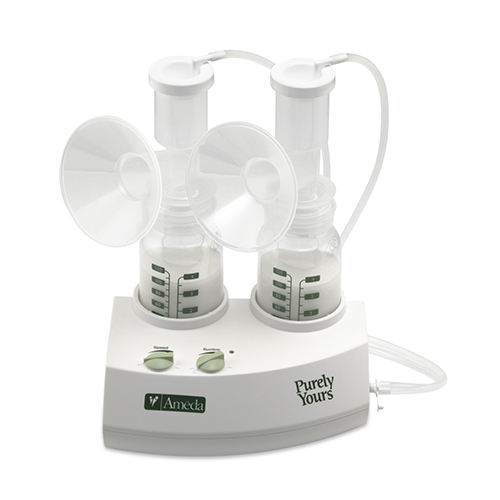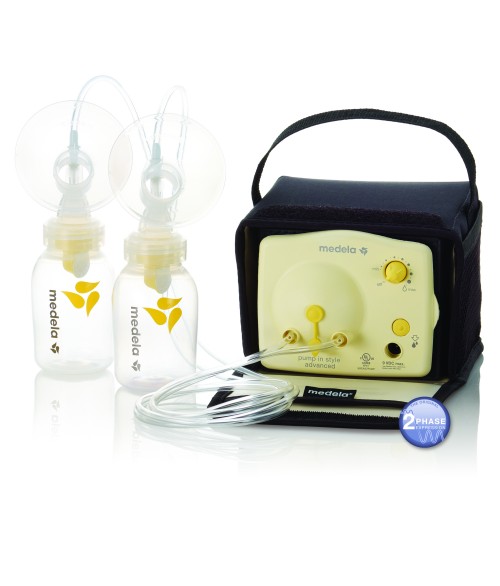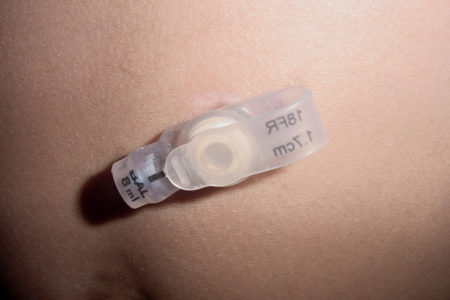Pumping at work allows you to continue to provide the best nutrition for your baby. Breastfed babies have fewer infections and illnesses than babies who are never breastfed. Continuing to provide breastmilk after you return to work also helps to maintain the special bond you share with your baby.
What are My Rights?
Under the Patient Protection and Affordable Care Act (ACA), most employers (generally those with over 50 employees) must offer their breastfeeding employees reasonable break times to pump for up to one year after her baby is born and a place (other than a bathroom) to comfortably, safely, and privately express breastmilk. The ACA is a federal statute, meaning that every state must comply. Your state may require that your employer provide you with additional benefits. If your employee is not willing to offer you space, or space other than a bathroom, you are within your rights to call the Federal Deparment of Labor (DOL). They can further instruct you on your rights. If you do make a complaint to the DOL, you can do so annonomously.
What Type of Pump Do I Need?
A good quality electric breast pump may be your best strategy for efficiently removing milk during the workday. The Patient Protection and Affordable Care Act requires most health insurance plans to cover the cost of some type of breast pump.
- Single Electric pumps are light and portable. Since you can only pump one breast at a time, pumping may take longer.
- Double Electric breast pumps allow you to express milk from both breasts at the same time, reducing pumping time.
- Hospital-grade, or rental, pumps may be covered for special circumstances.
How Often Should I Pump at Work?
Express milk during the times you would normally feed your baby, usually every 2-3 hours. In the first few months of life, most babies need to breastfeed eight to 12 times in 24 hours. As your baby gets older, the number of feeding times may decrease.
Expressing milk can take about 10 to 15 minutes, sometimes longer.
If you’re using a “double” electric pump that expresses from both breasts at the same time, it may take around 20-30 minutes each time. Expressing by hand or with a manual pump will take longer. Be patient. You will get more efficient with practice.
Tip: Your milk may flow more easily if you feel close to your baby while you are pumping.
- Bring something with the baby’s smell on it, such as a soft baby blanket or a baby shirt.
- Record your baby’s noises on your phone.
- Look at photos of your baby (prints or photos on your phone)
How Can I Set Aside Time to Pump at Work?
- Use your regular breaks and meal period to express milk. If you need to, talk with your supervisor about coming in a few minutes early or staying a few minutes later to make up the time.
- In a restaurant or retail store, express milk when business is slower, or ask about working a “split shift.” This means you work during the busiest periods (ex: lunch and dinner at a restaurant) and go home between those busy periods.
- If you don’t have a coworker who can cover for you while you are taking a break to express your milk, ask if you can post an “I’ll Be Back Later” sign while you’ll pump.
- Use the sample letter below to tell your supervisor about your breastfeeding needs. Feel free to use your own words and relate it to your specific work situation.
————————————————————————————–
TO: [Supervisor’s Name]
FROM: [Your name]
RE: Lactation Support in the Workplace
Thank you for your support during my [# of months or years] with [name of company]. This is an exciting time for my family and me as we prepare for the birth of our child. I am eager to work with you in making preparations that will allow me to return to work as soon as possible after the birth of my baby.
After speaking with my doctor and other health professionals, I have made the decision to breastfeed my baby. Just as I try to give my best to the company when I am at work, I also want to give the best I can to my baby. My doctor tells me that breastfeeding is important in preventing many illnesses and diseases for both my baby and me. Many businesses across America help their employees make this possible, and I hope we can find solutions together.
Here are my immediate needs:
- A private area with an electrical outlet to express milk during the workday. This space need not be large…even a 4’ x 5’ area is sufficient. Many companies provide a lactation room for their employees to use, and an electric breast pump to express milk.
- Flexibility to use break times to express milk. I will need to express milk about two to three times during an 8-hour shift to relieve breast fullness and to maintain my milk supply.
Pumping takes around 15 minutes (plus time to get to and from a place to pump). There may be occasions when I need to go over my allotted break time. If that happens, I would like to discuss options for making up the time.
Thank you. Knowing my company is making it possible for me to continue breastfeeding will help me feel much better about leaving my baby to come back to work. I look forward to discussing this with you.
Sincerely, [Your Name]
———————————————————————————————
Where Should I Pump at Work?
Your employer may already have a lactation room or designated area. If not, try these ideas:
- Private office of the manager or another worker
- Conference room or small room not used very often
- Small closet or storage area converted to a lactation space
- Dressing room of a retail store
- Partition in the corner of a room
How Should I Store My Breastmilk?
- Label the milk container with your name and the date you expressed the milk. Place the container in a canvas or insulated bag that you can discreetly put in the back of the workplace refrigerator with the other employees’ lunch bags.
- To freeze your milk, place small quantities in BPA free milk storage bags or glass containers. Label it with the date and use the oldest milk first.
- Place your milk away from the freezer door so it will not thaw when the door opens and shuts.
- If you will be adding fresh milk to a container of frozen milk, refrigerate it first since fresh milk is warm and can cause frozen milk to begin thawing.
- Thaw frozen milk under warm water. NEVER microwave breast milk!
- Once milk is warmed, use it immediately, and only for that feeding.
- Milk left in the bottle after feeding should be discarded.
- Milk that has been thawed should not be refrozen.
Storage Guidelines:
- Refrigerated at 32-39°F: Use within 2 days
- Frozen at 0°F or below: Use within 3 months
- Thawed (from frozen) in the refrigerator: Use within 24 hours
How Can I Reduce Stress?
- Get plenty of rest. Being a mom and working can be tiring, no matter how you feed your baby. Rest when you can, sleep when the baby is resting, and don’t be afraid to ask for help from family members for household tasks so you can focus on you and your baby.
- Research shows lactation hormones give breastfeeding moms up to 45 minutes of extra sleep each night!
- Talk with other breastfeeding moms. Seek out other nursing mothers at work or in your neighborhood to share experiences and gain support.
- Eat nutritious foods. Eating good foods will help you feel better about yourself and give you extra energy for handling the tasks of working and motherhood.
Reference:






























